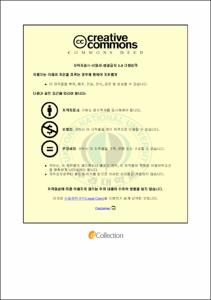기술연관분석을 활용한 기술융합 구조분석
- Abstract
- Leading to changes in society, culture and future economy by creating new value-added products and services, technology convergence amalgamates emerging and existing technologies to expand existing industries and create new ones. It is expected that the technological convergence will be the major driving force to ensure sustainable growth in the network-centric knowledge economy and there exists a growing needs for expanding and disseminating technology convergence in a variety of industrial sectors. In this regard, the government has also put a great amount of effort and provided various political measures to spread technological convergence. However, there have been few studies to investigate the process and structure of technology convergence which is essential to establish an effective strategy.
It is not unusual to focus on the analysis and control of output indicators when managing R&D projects. For the case of R&D activities based on technology convergence, however, the structure of technology convergence should also be examined by analyzing ripple effects of core technologies and similarities among involving technologies to maximize the effectiveness. Applying technology relation analysis, this study is aimed at providing an analysis framework to understand the convergence structure. A survey has been conducted and analyzed for 112 R&D projects sponsored by Korea Technology and Information Promotion Agency for SMEs through ‘SME Technology Convergence R&D Fund’ in 2011. Listing particular technologies adapted by each projects, input-output relationships among involving technologies are summarized in a matrix form. Need technologies are defined as the industrial fields, to which each project belongs, and classified using Korean Standard Industrial Classification (KSIC). On the other hand, seed technologies adapted to conduct the corresponding project are classified on the basis of National Standard Classification of Science and Technology (NSCST). Technology relation diagram for major groups of technologies are obtained by analyzing the ripple effects of core technologies and similarities among particular industrial fields during technology convergence.
It is expected that the results of this study may be utilized as the basis when establishing relevant policies to promote technology convergence. In order to facilitate the effectiveness of R&D investment of limited amount, it is imperative to prioritize projects considering the ripple effects of convergent technologies to be developed. Analysis of interdependency and contributing relationship among technologies will be utilized as effective indicators to determine the priorities among projects. Applying the proposed analysis framework when managing government supported R&D projects related to technology convergence and analyzing their effectiveness, an improvement of project planning and management system is also expected. A wider application of the proposed analysis framework to various types of R&D projects may complement the validity of research results. Finally, a periodical review of technology relation analysis may contribute to forecasting future trend of technology convergence and deriving core technologies to be developed.
- Issued Date
- 2013
- Awarded Date
- 2013. 8
- Type
- Dissertation
- Publisher
- 부경대학교
- Affiliation
- 대학원
- Department
- 대학원 기술경영협동과정
- Advisor
- 김영진
- Table Of Contents
- Ⅰ. 서론 1
1. 연구의 배경 1
2. 연구의 의의 2
3. 논문의 구성 3
Ⅱ. 기술융합 4
1. 융합의 개념과 확장 4
2. 융합지수 9
(1) 특허지표를 활용한 융합지수 10
(2) 제품을 활용한 융합지수 14
(3) 기술개발과제를 활용한 융합지수 16
(4) 융합지수의 비교 18
Ⅲ. 기술연관분석 19
1. 기술연관분석 개념 19
(1) 기술연관분석의 개념 19
(2) 기술연관분석의 유형 21
(3) 기술연관분석의 활용 22
(4) 기술연관분석의 유의점 24
2. 기술연관분석의 사례 25
(1) 국외 기술연관분석 사례 25
(2) 국내 기술연관분석 사례 27
Ⅳ. 기술융합 구조분석 31
1. 연구방법 31
(1) 기술의 분류 33
(2) 기술연관표의 작성 34
(3) 기술연관도 분석 및 순위화 35
(4) 기술유사도 분석 및 그룹화 37
2. 연구표본 38
3. 기술연관도 분석 40
(1) 기술의 분류 40
(2) 기술연관표의 작성 42
(3) 시드기술연관도 분석 44
(4) 니드기술연관도 분석 47
3. 유사도 분석 50
(1) 기술유사도 분석 50
(2) 기술 그룹화 53
Ⅴ. 결론 55
57
[별첨] 연관의 유무에 따른 분석결과 61
- Degree
- Master
- Files in This Item:
-
-
Download
 기술연관분석을 활용한 기술융합 구조분석.pdf
기타 데이터 / 18.55 MB / Adobe PDF
기술연관분석을 활용한 기술융합 구조분석.pdf
기타 데이터 / 18.55 MB / Adobe PDF
-
Items in Repository are protected by copyright, with all rights reserved, unless otherwise indicated.